#breslav
Explore tagged Tumblr posts
Text
Well, I have been talking about some interesting Jewish story ideas lately, and I thought that maybe I should share this one. It's a fanfic idea that is only tangentially Jewish, but it might be easier to find an audience for it here than it was in the Discord I originally talked about it in. It didn't seem to interest too many people there.
The basic idea is of Dick Hanshaw from Asimov's short story "It's Such a Beautiful Day" joining a Discord server for support of his going outdoors. The story, to those unfamiliar with it, is as follows: in a world where transportation is largely done through Doors that teleport you directly to another building, Mrs Hanshaw's Door mulfunctioned and she had to send her son Dick to school through the regular door instead while it was being fixed. Following that, young Dick developed a love of the great outdoors (which no one around him is walking in, since he lives in the first fully Door-based community) and went to school through the regular door every day. Fearing he's got some sort of neurosis, his mother calls a therapist to see him who (kind of Hindik-like, actually - don't worry if you didn't get the reference) tells young Dick he also enjoys walking outside, and eventually tells the mother not to worry and that it'll pass if Dick wasn't prohibited from doing so.
For some reason, one day I thought that this kid could use something similar to communities I've found on Discord, so I thought of writing a fanfic that's essentially a Discord group with various characters related to the world Asimov created, focusing more on Dick but including a couple more stuff.
Now, the idea isn't yet all too developed. Dick's situation did remind me of a particular story about R' Nachman of Breslov, so I thought of adding a character to tell this story - a robot of the QT series (from the short story "Reason", one of the stories in I, Robot). I decided to make it that on grounds of the first QT inventing robot religion, and for some reason I thought that making a robot follow R' Nachman's teachings might be interesting. In what little of this fic I've written it has been something of a self insert, though, which... well, I'm not a Breslever, no matter how much I enjoy some of their teachings. By the way, this QT's serial number was going to be QT-282, because of course it is.
Beyond that, I didn't have many characters in mind. Maybe one person from Mars which could be used for timezone shenanigans taken up to 11 (still need to work on a more interesting backstory for them) and someone who has trauma from the recently-invented mind probe, which Dick's therapist has a strong negative opinion on and which another Asimov story ("Singing Bell") indicates can cause brain damage. Beyond that, I still need to think up more characters.
The Discord server isn't intended to be a public or large one. It also isn't necessarily Discord, but I'm really not sure where messaging apps will go in such a world. I would appreciate feedback and suggestions of characters - I'm also not sure yet of the story, it might be happening contemporarily to "It's Such a Beautiful Day" or right after it.
#jumblr#judaism#jewish sci fi#(sort of)#isaac asimov#asimov's short stories#i robot#it's such a beautiful day#story idea#arch writes#a bit of breslav#though just a pinch for now
12 notes
·
View notes
Photo
"If you believe breaking is possible, believe fixing is possible"
-Rav Nachman of Breslav
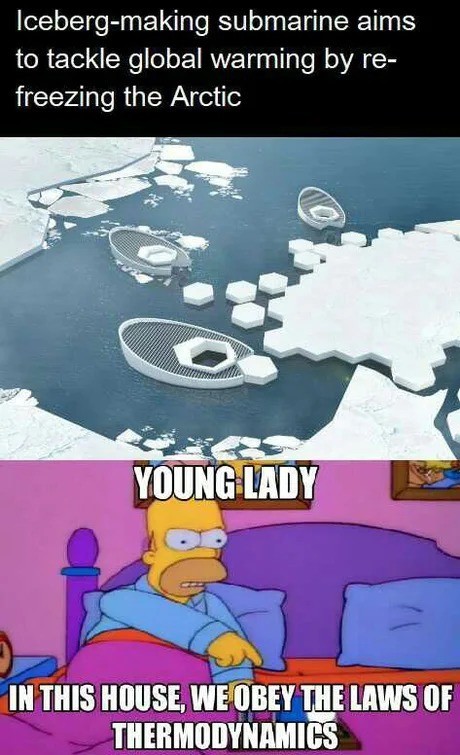
358K notes
·
View notes
Link
Everyone has stuck roads in life that cannot be crossed only by prayer and mercy that will help them from heaven... to reach the top of the mountain and reach the destiny of the human soul...
The days of Elul are days of a spiritual operation in which things can be put in order by increasing the power of prayers to evoke and continue mercy from heaven in all matters of life for every person and creature...
Make a redemption for your soul and register for the prayers of Breslav Chassidim with Rabbi Nachman on Rosh Hashanah and days of joyous holidays - by donating to the decent poor and his yeshiva in the holy city of Jerusalem.
Together with you, we will invest all our strength in learning the Torah and special prayers with the cleansing of the evil eye and blockages and curses... everything so that you will reach your destiny and be able to fulfill all your dreams and all troubles will turn into joys and successes, Amen and Amen...
https://www.breslevmeir.com/?p=23593
0 notes
Text
Israël paiera à la Moldavie 700 000 shekels pour faciliter le passage des hassidim de Breslev à Ouman
Le ministère des Finances et le ministère des Affaires étrangères d’Israël ont trouvé une source budgétaire pour financer le paiement de la dette envers la Moldavie pour les services fournis aux hassidim de Breslav l’année dernière, afin que la Moldavie accepte d’autoriser les pèlerins se dirigeant vers Ouman à traverser son territoire, cette année. Il s’est avéré que, pour le renforcement des…
0 notes
Photo

Almanya Devlet-i Fehimesi tarafından Hükümet-i Osmaniye'ye satılmış ve Midilli namını almış olan Breslav muhafazalı kruvazörü.
Midilli Krüvazörü'nün özellikleri, foto��rafı. (20 Ocak 1915) Cisimat ve sürati: 4500 tonilatoluktur. Sürati saatte 27 buçuk mildir. Techizatı 1 buçuk santimlik 12 adet mütevasıt toptur.
16 notes
·
View notes
Photo



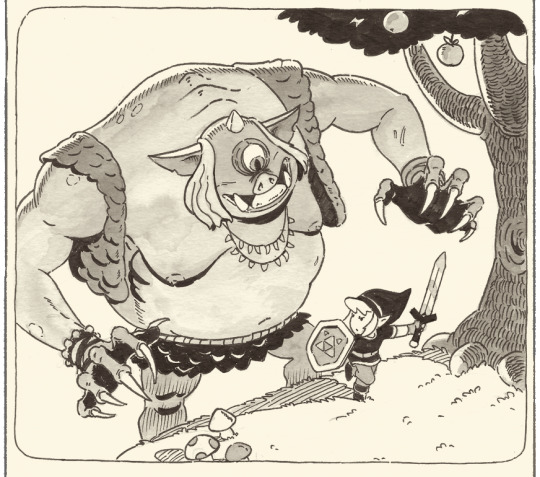

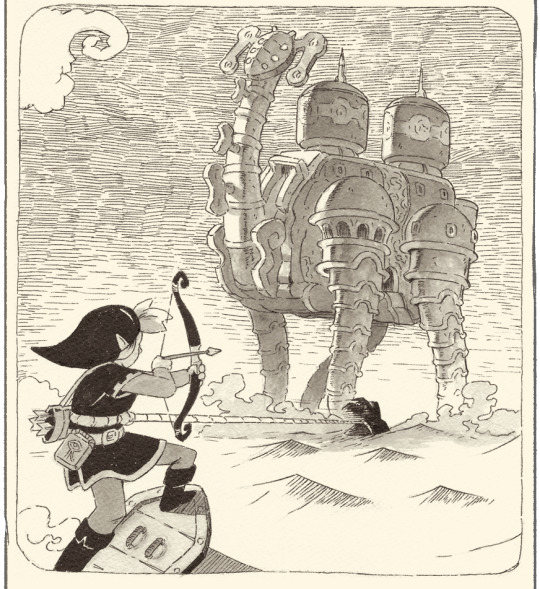
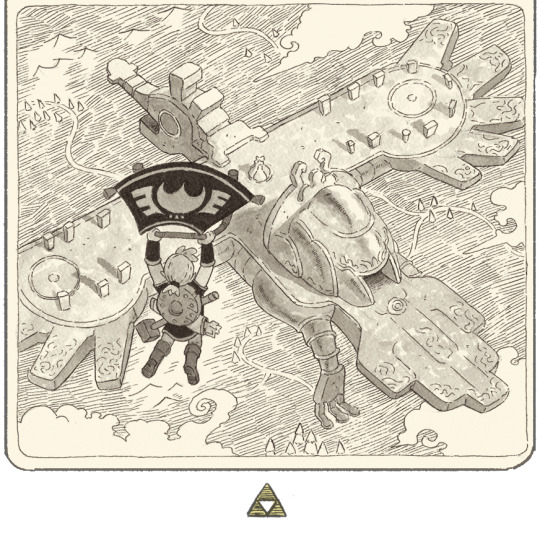
The Legend of Zelda - 35th Anniversary
Series by Israel Breslav || IG
5K notes
·
View notes
Photo

Jewish people praying at the grave of Rabbi Nachman of Breslav in Uman, Ukraine; 2006. x
Rabbi Nachman, the great-grandson of the Baal Shem Tov, was an important figure in the Hasidic movement and attracted thousands of followers during his lifetime by combining Kabbalah with in-depth Torah study. His influence continues even until today through many Hasidic movements such as Breslov Hasidism. Rebbe Nachman's Jewish philosophy revolved around closeness to G-d and speaking to G-d in normal conversation "as you would with a best friend." His grave, located in Uman, Ukraine, remains an important pilgrimage site for many Hasidism.
63 notes
·
View notes
Text
"Non chiedere mai la strada a qualcuno che la conosce,
non ti sarebbe più possibile perderti."
— Rabbi Nachman di Breslav
#perdersi#ritrovarsi#strada#non capire#capire#imparare#lezione#frasi vita#vita#frasi belle#frasi tumblr#frasi vere#frasi intelligenti#frasi interessanti#frasi e citazioni#Rabbi Nachman di Breslav#frasi#ragazzoarcano
66 notes
·
View notes
Quote
He (Nachman of Breslav) said: 'The World has tasted nothing yet. If they would hear just one of my teachings together with its melody and dance, they would all submit completely. The entire world, even the animals and plants - everything - all would submit completely. Their very souls would faint from the sheer wondrous ecstasy. Also, each person who is closer, his movements happen of their own accord, as he senses that mentioned above. Whoever is closer to the melody and dance understands more and performs the melody's movements automatically due to this great pleasure.... Likewise, the closer one is to the holy, that is - the closer to the teachings, the song and the dance - the more the movements occur on their own owing to the holiness. All this I heard myself.
The Scroll of Secrets. The hidden messianic vision of R. Nachman of Breslav Academic Studies Press 2010
21 notes
·
View notes
Photo





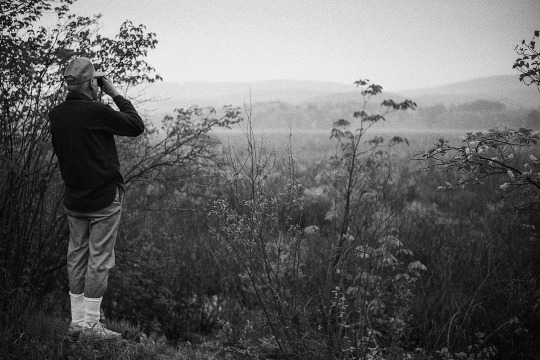
Thirty Years Ago—and a Loss
I heard of a passing recently: Ralph Odell. In one of my previous lifetimes, I was able to go birding with three fellows: Henry Turner, Marc Breslav, and Ralph Odell—I was privileged to be on a bird-a-thon team with them in both 1990 and 1991. This was out of the Putnam Highlands Audubon Society, fifty miles north of New York City, in Philipstown, across the Hudson from West Point.
A bird-a-thon is a competitive event where teams strive to see as many species they can in a 24-hour period. We used this activity to raise money for our chapter, and would be successful enough to put up a building at Constitution Marsh Sanctuary, in Garrison, New York.
I had become a rabid birder immediately after moving out of Brooklyn in the spring of 1989. I fell in with the Audubon crowd in Garrison and made acquaintance with Marc Breslav (bearded fellow seen here). He, in turn, invited me to join their bird-a-thon team in 1990. Henry Turner (man with mustache here) was an outstanding birder who traveled the world building his life-list; he took me under his wing and taught me much about birding, for which I’m thankful. Ralph Odell (clean-shaven, seen alone in final image above) was a kind, older gentleman, soft-spoken, widower, who had been a school teacher in Garrison. Despite me being green, we won the competition during my first year, that of 1990.
I believe we typically began on Jones Beach, and Jamaica Bay, on Long Island, and worked our way back up to Putnam County. We’d then go further north and west, to Bashakill Marsh, over in Sullivan County, then back down to Bear Mountain, and other nice spots around the Hudson River. The point is to hit as many types of habitats as possible, and thus see the most species. After our win, I would be awarded a free week’s stay at the National Audubon’s camp on Hog Island, Maine.
But more importantly than that, I got to hang out with these people—we had fun, enjoyed the out-of-doors, and raised money for an organization that looks after the health of migratory bird species. I remember Ralph being a nice man, but it’s been a long time—his obituary reminded me of what I did know about him, and informed me of things about his life I did not know—I’ll link it here. I wish I’d spent more time with him when I had the chance.
Six images by Richard Koenig; taken in the state of New York during the years of 1990 and 1991.
#audubon#birdathon#putnamcounty#garrisonnewyork#jonesbeach#bashakillmarsh#constitutionmarsh#hudsonriver#philipstown#sullivancounty#newyorkstate#jamaicabay
3 notes
·
View notes
Quote
Gauge a country’s prosperity by its treatment of the aged.
Rabbi Nachman of Breslav
69 notes
·
View notes
Video
youtube
https://www.youtube.com/watch?v=L46FKTsSGeY
Naomi Shemer is so much more than just “Yerushalayim Shel Zahav.” This is the Zamir Chorale of Boston performing her “Shirat Ha-asavim,” or “The Song of the Grasses.” The text is a little bit remote and mystical, derived from Rabbi Nachman of Breslav. It posits that every blade of grass (by extension, all of the natural world) has its own particular song, and all of these songs blend together to inspire the poetry of a shepherd, which then fills the heart with joy and love for the Divine, shining light on Israel and creating a second, deeper melody of the heart. The gentle music and overlapping voices of the choir really do evoke a field of swaying prairie grass (well, to me, at any rate; there aren’t much in the way of prairies in the Levant), and there’s a slightly otherworldly quality to the sound that reminds us that prayer does not necessarily have to come from human actors.
3 notes
·
View notes
Link
The whole world depends on the Rosh Hashanah of Rabbi Nachman of Breslav. Why do Rosh Hashanah redemption with Rabbi Nachman of Breslav? https://www.breslevmeir.com/?p=23593
0 notes
Text
Tragédie à Ouman : le cercueil de David Mirilashvili, un habitant d'Ofakim décédé à Roch Hachana va arriver en Israël
Baruch Dayan a émeth : au milieu du Jour du Jugement dernier, le lundi de Roch Hachana, le rabbin David Mirilashvili, le défunt habitant d’Ofakim, s’est soudainement effondré dans la ville d’Ouman près de Sion, le rabbin Nachman de Breslav . Il n’avait que 55 ans au moment de sa mort. Le rabbin David est né en Union soviétique le 29e jour de Menachem Av 5788 de son père, le rabbin Yisrael…

View On WordPress
0 notes
Text
"All the world is a very narrow bridge, and the most important thing is not to be overwhelmed by fear." -Rabbi Nahman of Breslav
"I will close my eyes and imagine my beautiful husband on the other side waiting for me. And I will run accross the lava." -Nott The Brave
35 notes
·
View notes
Text
Formation of a Lithuanian State

Soldiers for the 1207 expedition into the lands along the Dvina conquered by the Germans, were enlisted from all over Lithuania (i.e., not only in the land of Lithuania itself). In 1212, Lithuanian Prince Dangerutis signed a treaty with Novgorod against Livonia. Dangerutis’ rule probably encompassed a large territory otherwise there would have been no point in Novgorod making such an agreement. In 1219, twenty-one senior Lithuanian princes signed a treaty with Volynia. Among them were Živinbudas, Dausprungas and his brother Mindaugas, Daujotas and his brother Vilikaila, and princes from Žemaitian, Deltuva, Ruskavičius, and Bulevičius families. They acted as a united front, and. though the Žemaitian and Deltuva princes could not have had any direct contact with Volynia, no one ruler was considered emi’ nent. This fact is borne out by common Lithuanian endeavours, and the process, if not the completion, of the unification of the state. There have been historians - including Henryk Paszkiewicz, a major researcher in this area who claim that Lithuania was already united prior to the 1219 treaty. Paszkiewicz’s strongest argument included the father of Mindaugas, the future ruler of Lithuania, who was supposedly the most powerful of the Lithuanian princes, as well as the circumstances of a strong expansion by Lithuanian princes into Rus’ and into the junction of the Lithuanian owned buffer zone (formed at the turn of the twelfth century) between it and Rus’. But even they agree that at the turn of the twelfth century, the rulers of a unified Lithuania were not able to maintain authority for long periods of time. A radical concept of the formation of a Lithuanian state has recently been presented by Tomas Baranauskas. He dates the formation of the duchy of Lithuania, and the emergence of a stable state organisation in Lithuanian lands, in approximately the eleventh century. He also maintains that the more frequent and forceful Lithuanian expeditions into Rus’ after 1183 are proof of the existence of the Grand Duchy of Lithuania, and claims that the “Lithuanian Duchy” expanded constantly, uniting all of the Lithuanian lands, from the eleventh century onward. Sources, however, indicate the probability of other roads, including first of all the aforementioned unification of Lithuanian tribes/lands into a not necessarily stable political structure, and the skillful transformation of that structure into a state. In keeping with H. Paszkiewicz, these processes would be the ebbs he indicates in the formation of the state, i.e., when several senior princes once again replaced the ruler of a united Lithuania -thus showing that the formation of the state had not yet been completed.
In the end, we are left having to agree with Henryk Lowmianski, Vladimir Pashuto, and Edvardas Gudavičius, who, without uniformly interpreting the level of socio-economic development in the Lithuanian lands, or the context and meaning of the effects of outside factors, have grounds for stating that the work of unifying Lithuania fell upon the aforementioned Prince Mindaugas of the land of Lithuania (in the narrow sense).
In working to unify the lands of the Lithuanians into one state, Mindaugas encountered diverse unfavourable external and internal factors. His endeavours were taking place while the Order of the Knights of the Sword, the Catholic Church, and German merchants were consolidating in Livonia. The lands of the Lithuanians became of interest to these forces and their distant protectors, the Pope and the Emperor. From 1228 onward, Lithuania is mentioned as one of the pagan lands to be conquered, and is targeted in a crusade proclaimed by Pope Gregory IX in 1236. The Order and its aides were defeated, however, at the Battle of Saulė not by Mindaugas, but by the Žemaitian, Prince Vykintas. As well as revealing the capabilities of a Lithuania undergoing unification, this battle disclosed the serious internal problems in Livonia, a state on the verge of collapse. The Pope’s attempts to expand his own personal authority into the Baltic lands were also unsuccessful. At that point, the Order of the Knights of the Sword was restructured, and under the name of the Livonian Order, became a branch of the Teutonic Order warring on Prussian lands. '
These events in themselves did not directly affect the heart of the Lithuanian lands, though the conquest of the Prussians by the Teutonic Order, which began in 1231, as well as the unification of the two Orders, could not have escaped notice by the Lithuanians. Two highly aggressive state powers had formed and from Germany, who ultimately created the State of the Teutonic Order, and Livonia. In 1207 Livonia became an imperial vassal, and in 1226 the Grand Master of the Teutonic Order became an imperial prince. Bringing Christianity into the Balt lands, and creating states therein, was part of the great German advance towards the East (Drang nacb Osten). Where it happened peacefully, without coercion and military exploits, e.g., in the case of the expansion of German townspeople and city rights throughout Central and Eastern Europe, the results were positive and fruitful. In the Balt lands, however, other means were rejected, and innovations were attempted by military force. The results in Prussian, Latvian and other Balt, as well as Estonian and Liv lands were of a conflicting nature. The Catholic Church, Livonian and Teutonic Orders, and the Hanseatic League merchants brought Christian culture, the fortunes of civilisation, and a superior social organisation to the conquered lands, but these remained foreign properties. Social barriers emerged between the new-comers and the local inhabitants, who were exploited; their social structures were destroyed, and all possibilities for harmonious development within their own societies were in essence annihilated. Social subjugation was accompanied by ethnic oppression non-Germans became inferior people. ‘ Lithuanians living in the vicinity of these young and aggressive states were also threatened by a similar fate as witnessed by the crusade against it in 1236. The Livonian factor had invaded the process of the unification of Lithuania.
Unification must have taken place during the third and fourth decades of the thirteenth century with no mention of the other senior princes of the 1219 treaty. Sources reveal no agenda of events, but they do have something to say about the methods that Mindaugas used: he took up arms and assassinated certain rivals, with some of the princes submitting to his will and serving as his vassals, while others became subjects via the ritual of marriage. In other words, he acted in a similar manner to other state unifiers during a period of transformation from a pre-state to a state existence. By approximately 1245, Mindaugas was being called supreme king, and it was understood that all of the Lithuanian lands and those of certain neighbours - southern Selonia, Black Rus’, possibly the Rus’ian castles of Breslav and Minsk were in the hands of a single sovereign. His later documents indicate that his authority, though probably only nominally, was also recognised by Nadruva, Skalva, and the Yotvingians in northern Sudavia.
Thus was the state of Lithuania born established by Mindaugas at the turn of the fourth decade of the thirteenth century. Seeking to rise above the other princes and to force them to obey his will, wishing to expand his territories, and implementing his own personal aspirations, he carried out an exceptionally crucial and important work in terms of the entire Lithuanian world at that time i.e., he united all of their lands into a single state. The first stage of building a State of Lithuania was thereby completed. However, the newly created state, or to be more exact, the state which was being created, found itself in immediate danger, and was forced to defend its right to exist.
*Zigmas Kiaupa - The History of Lithuania
2 notes
·
View notes